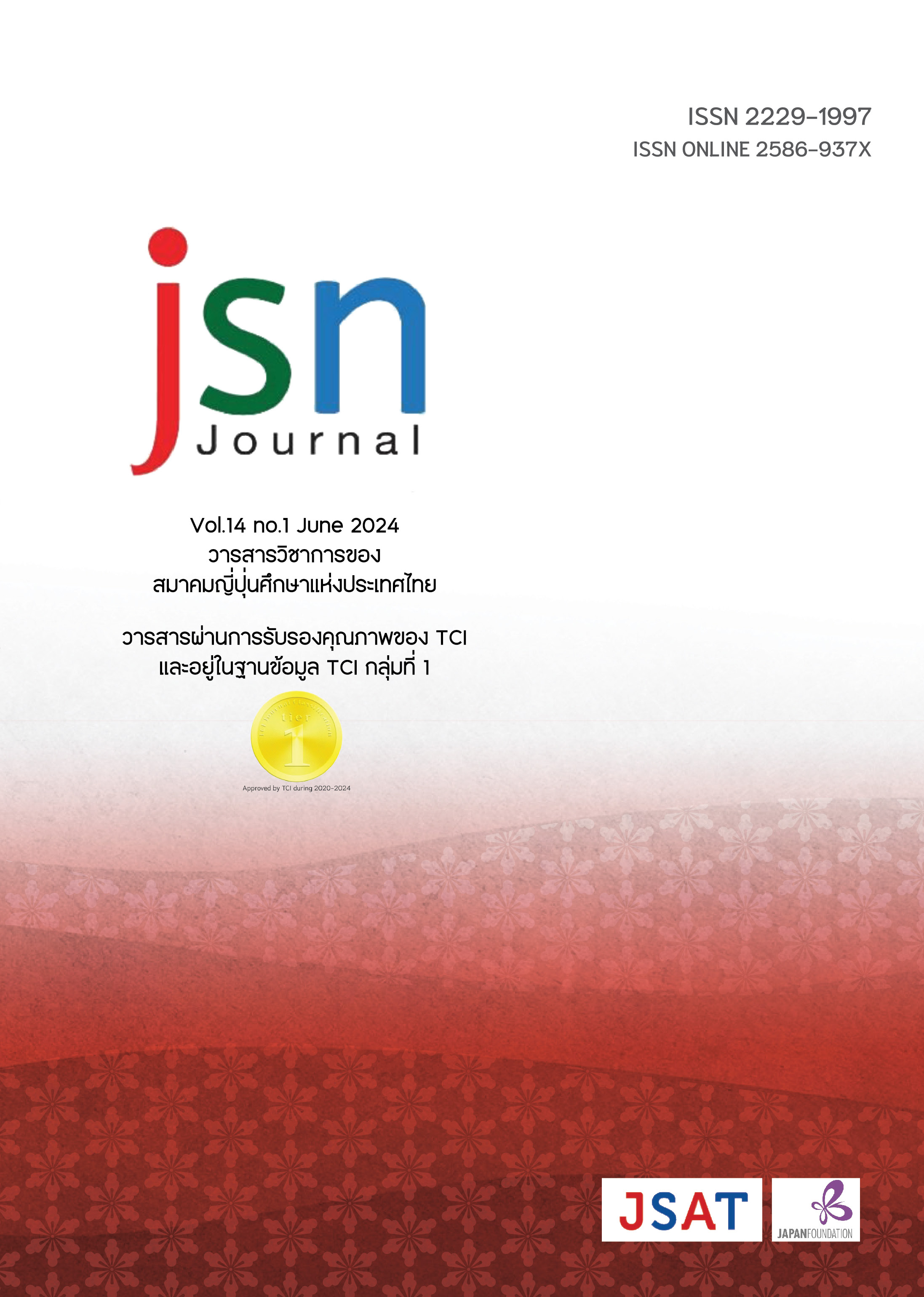Self-correction in Japanese Public Speaking: A Case Study of Native Speakers’ Speeches in the CSJ Corpus
Main Article Content
Abstract
This paper investigates the patterns of errors and self-corrections made by native Japanese speakers in public speaking, with the aim of developing a model for teaching Thai learners how to deliver effective monologues. The study analyzes data from 60 speeches by native speakers from the CSJ (Corpus of Spontaneous Japanese), identifying 721 errors in total. Classifying the errors into five types revealed that native speakers tend to correct minor errors (pronunciation, word usage, grammar) immediately without correction markers. However, for major errors (expression and information), they typically use eight types of markers to indicate correction. These self-correction markers include: markers of changing, such as toiu ka; markers of expressing hesitation such as a and maa; markers of refutation such as janai; markers of apology such as gomennasai; markers of expressing doubt such as ka; markers of additional explanation such as ga; markers of searching for words such as nan-toiu-ndesuka; and markers of stalling by using shared information such as are-desune. In addition, native speakers tend to use polite forms when employing certain types of markers in public speaking situations.
Article Details

This work is licensed under a Creative Commons Attribution-NonCommercial-NoDerivatives 4.0 International License.
ข้อความและข้อคิดเห็นต่างๆ ในบทความเป็นของผู้เขียนบทความนั้นๆ ไม่ใช่ความเห็นของกองบรรณาธิการหรือของวารสาร jsn Journal
References
Jefferson, G. (1972). Side Sequence. Sudnow, D. (edit) Studies in Social Interaction. Free Press: New York.
Khosa, D., Sharif, S., Malghani, M. (2017). The Phenomenon of Self-correction in the Speaking Skills of Undergraduate Students: A Case Study of SBKWU. Asia Pacific Journal of Advanced Business and Social Studies. Asia Pacific Institute of Advanced Research, 215-223.
Neustupny, J.V. (1985). Problems in Australian-Japanese Contact Situations. Cross-Cultural Encounters: Communication and Miscommunication. Melbourne: River Seine Publications, 44-84.
伊豆原英子・嶽逸子(1992).「中・上級学習者の話し言葉(独話)の分析と考察―情報伝達を通して-」『日本語教育』77, 103-115.
国立国語研究所(1987).『日本語教育映画:基礎編総合文型表』日本シネセル.
施信余(2014).「対面接触場面における調整行動−台湾人日本語学習者と日本語母語話者の会話より」,日本語/日本語教育研究会編『日本語/日本語教育研究』5, ココ出版, 191-206.
宋佳音(2015).「接触場面における会話の調整行動−中国人日本語学習者を中心に」『言文』62. 27-38.
張玲玲(2014).「言語的修復行動に関する誤用論的研究:中国語との比較を通して」北海道大学文学博士論文.
東海大学留学生教育センター口頭発表教材研(1995).『日本語口頭発表と討論の技術―コミュニケーション・スピーチ・ディベートのために』東海大学.
宮崎里司(1998).「第二言語修得理論における調整、意味交渉及びインプット」『早稲田大学日本語研究教育センター紀要』11,早稲田大学,177-190.
宮崎里司(1999).「接触場面でのコミュニケーション調整とそのディスコースパターン――自己マーク自己調整を中心として」『早稲田日本語研究』7,65-76.
宮崎里司(2002).「第二言語習得研究における意味交渉の課題」『早稲田大学日本語教育研究』創刊号,早稲田大学日本語教育研究科,71-89.
林香淑(2011).「話し言葉における「なんというか」類の使用について:中国語、韓国語母語話者を対象に」『日本語研究』31,63-76.
แหล่งคลังข้อมูล
国立国語研究所・情報通信研究機構(2004).「日本語話し言葉コーパス」(CSJ).
国立国語研究所( 2005).「日本語学習者による日本語/母語発話の対照言語データベース」.


